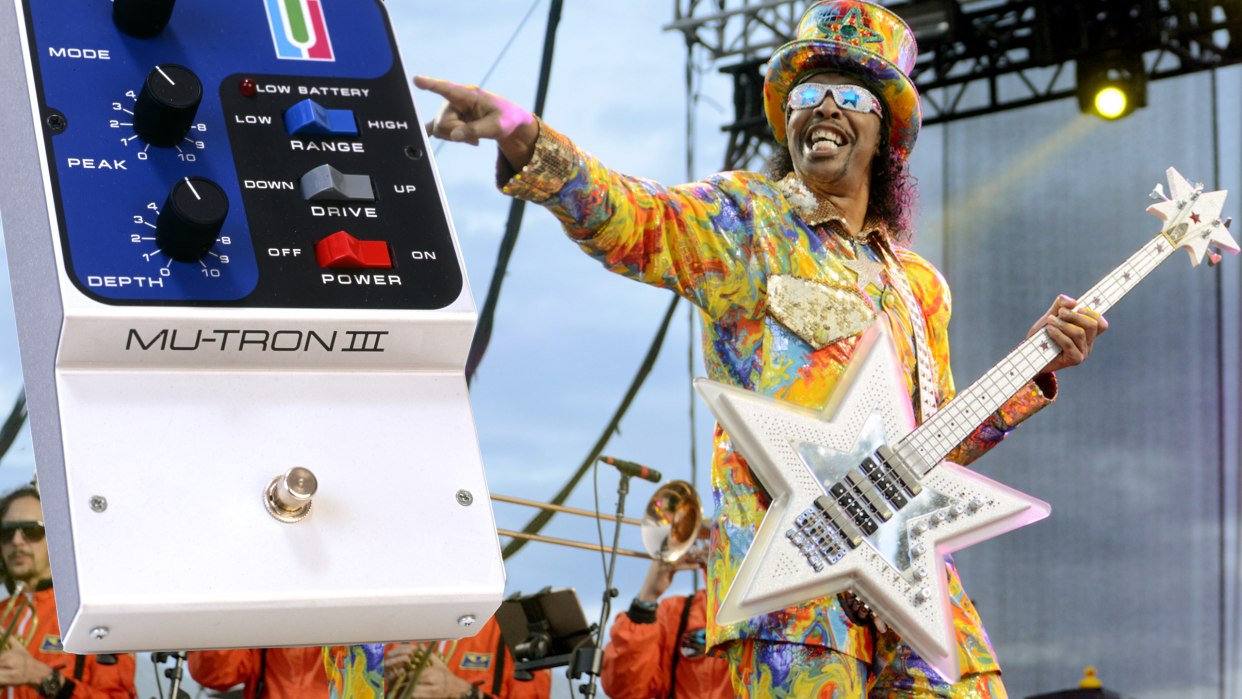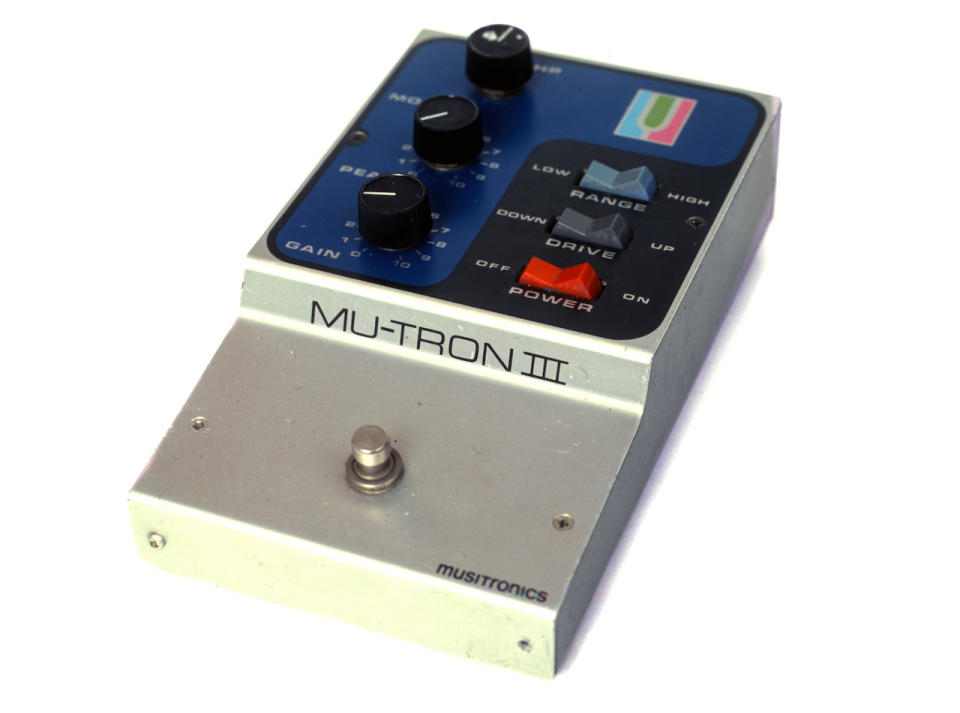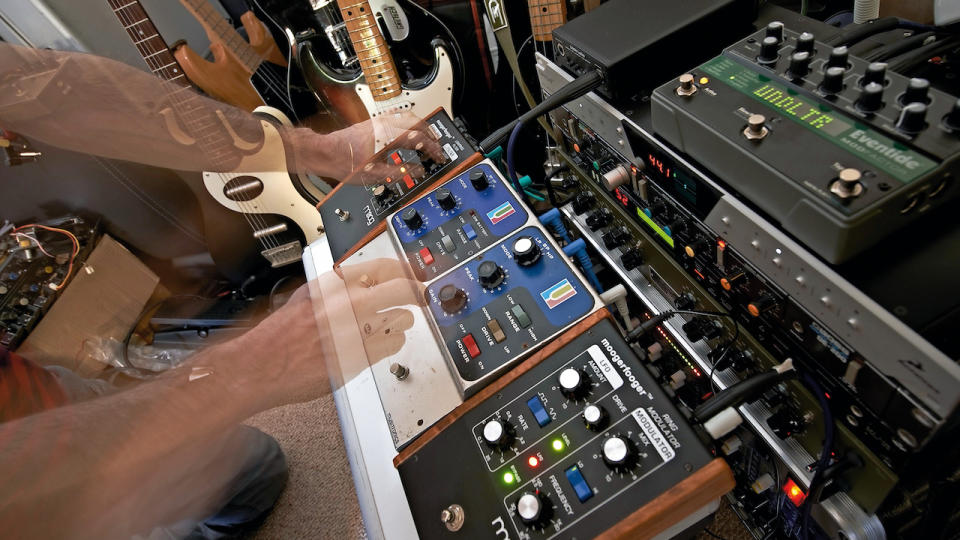The Mu-Tron III: “Without it, there ain’t no Bootsy”

If there’s one effect pedal that can give you that instant funk-bass sound, it’s unquestionably the envelope filter. The first, and still widely considered the best, is the Musitronics Mu-Tron III.
Can you imagine Flea’s Sir Psycho Sexy without the dripping funk squelch produced by the dying batteries in his Mu-Tron III? Or Parliament Funkadelic without Bootsy’s filter-laden bass guitar antics? Bootsy Collins himself is alleged to have said that "without that Mu-Tron, there ain’t no Bootsy." Come, as we delve into the cosmic spill that is the Musitronics Mu-Tron III.
A Little History
Mike Beigel and Aaron Newman formed Musitronics Corp in 1972 in Rosemont, New Jersey. After a failed synthesizer project for Guild, Mike Beigel used some of his designs to create an envelope-controlled filter for electronic instruments.
The original prototype was called the ‘Auto-Wah’ but was renamed before initial release as the ‘Mu-Tron’, a contraction of the company name. The Roman numeral ‘III’ was apparently Beigel’s favourite number and was adopted from the start – versions ‘I’ and ‘II’ never existed.
Musitronics continued to make the Mu-Tron III, along with other phase and octave effects, until 1979, when they sold the company to ARP. The Mu-Tron was still produced by ARP for about a year before the company went under in 1980.
In Use
The Mu-Tron III has six simple controls – three knobs and three switches – which allow you to tweak the filter in a number of different ways. The mode control selects a low pass, band pass or high pass filter sweep. Using the peak knob, you can adjust the amount of the filter that’s being added to the signal, and the gain control doubles as both a volume and sensitivity control.
The range switch adds the filter sweep to the low or high end of your signal, and for those classic auto-wah sounds put the drive switch in the up position. Like all envelope filters, the level of ‘quack’ is controlled by how hard you hit the strings on your bass, so you’ll need to adjust the gain control accordingly.

The phenomenal sound of this pedal makes it very easy to love. Every one of its settings leads to one of those classic filter tones so very reminiscent of familiar P-Funk tracks. For a thick, dirty filter tone set the gain level quite low and the peak control on full. With the drive switch in its down position the filter closes as you strike the string, producing more of an ‘owwh’ vowel sound – a bit like listening to an underwater ray gun.
If you’re keen to experiment with some different sounds, try using the Mu-Tron III with an octaver. In fact, it works fantastically well with any other pedal.

Alternatives
This is probably one of the most copied pedals ever, though it seems few have come close to fully replicating its sound. Part of designer Mike Beigel’s technical genius was to use opto-isolators to control the filter, which is the most common reason why MuTron clones that lack these integral features never quite hit the spot. HAZ Laboratories produced a reissue named the ‘Mu-Tron III+’, yet despite looking like an exact replica of the original Musitronics pedal, it is not an authorised version and, according to Mike Beigel, the circuit is not the same.
In 1995, Electro-Harmonix commissioned Beigel to help them with their popular Q-Tron filter. This is a fine filter for those on a budget, and well worth considering if you can’t justify the hefty price of the Mu-Tron III. The Univox MU-1500 Funky-Filter and Monacor MA-10 Effectmatic are two of the very few close replicas based on the schematic released by Beigel. Nowadays, though, these seem to be even rarer than the Musitronics Mu-Tron III.
Boutique filters like the EMMA Discumbobulator and Subdecay Prometheus are arguably the devices that have come closest to the original Mu-Tron III sound, and both offer many of the same features of the original. The Maxon AF-9 can also deliver some uncanny Mu-Tron III moments, but there really is no substitute for the real thing.
Where Can I Get One?
With the stompbox revival in the 90s, the Mu-Tron III became an instant collector’s item and remains so to this day. Originals are still available quite regularly on eBay and they do occasionally pop up on the forums as well. They are eagerly sought after and therefore usually expensive. Make sure it bears the ‘Musitronics’ logo to the right of the footswitch. A modified version was also released in 2014 by Beigel's new company Mu-FX.
As pedals go, the MuTron has to be up there as one of the all-time classics, regardless of the hype surrounding its collectable status. Envelope filters simply don’t get better than this.
Visit mu-tron.com for more info.

